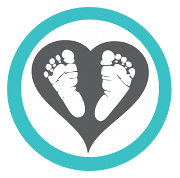There are many reasons why cramps may occur. Inadequate stretching and overexertion might lead to a build up of lactic acid in your muscles. Muscle fatigue and dehydration may also contribute. Cramps are also more likely to happen in hot weather since you tend to lose more fluids. Not drinking enough is the most common cause of these cramps so keep sipping!

Leg cramps can be caused by low levels of potassium. When you have an insufficient amount of this mineral it upsets the electrolyte balance inside of your body which otherwise maintains normal healthy muscle functioning. You may only need to make simple dietary changes to reduce the likelihood of further cramps. Potassium is one of the main nutrients in a banana so eating more bananas could really help a lot. Orange juice, avocados,nuts, milk, potatoes and leafy greens are also good. Isn't it amazing how diet can fix what's wrong?
 Other possible causes include sitting in one place for a long time as the muscle is not getting the chance to stretch a little to keep it supple. Drinking alcohol, changes associated with pregnancy, diabetes, Parkinson’s disease, some kinds of flu virus which seems to cause a temporary muscle spasm effect, and some types of medication can also contribute to the problem.
Other possible causes include sitting in one place for a long time as the muscle is not getting the chance to stretch a little to keep it supple. Drinking alcohol, changes associated with pregnancy, diabetes, Parkinson’s disease, some kinds of flu virus which seems to cause a temporary muscle spasm effect, and some types of medication can also contribute to the problem.When cramps occur, try a few tricks to help the muscle relax. Start by gently stretching the area, but don’t reach too far; just lightly push the muscle until you feel a stretch or flex the foot upward. Usually it is not a good idea to point the toe, however. Learn specific stretches to use. Another way to reduce the pain is to gently massage the cramped muscle, but no hard rubbing! You might also try to ice the affected area for 15 minutes at a time. This will increase the circulation to the muscle. Some women benefit from a warm compress or bath.
Good advice from BabiesOnline.com
"If you experience persistent pain from these leg cramps see your doctor just in case you have something more serious going on. One of the most likely causes could be a blood clot in the leg. This can be deadly and should be treated as soon as possible." (Click the post title to read their full article).

























No comments:
Post a Comment
This blog only reviews comments before posting to avoid hijacking. We will respond to comments Mon-Thurs but we are closed Fri-Sun and legal holidays.